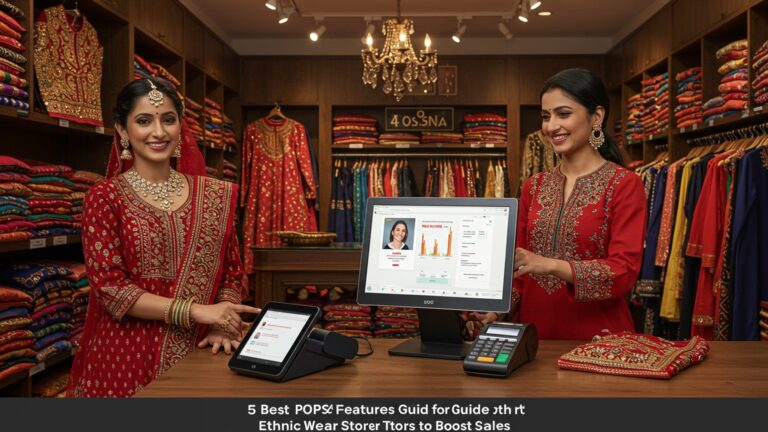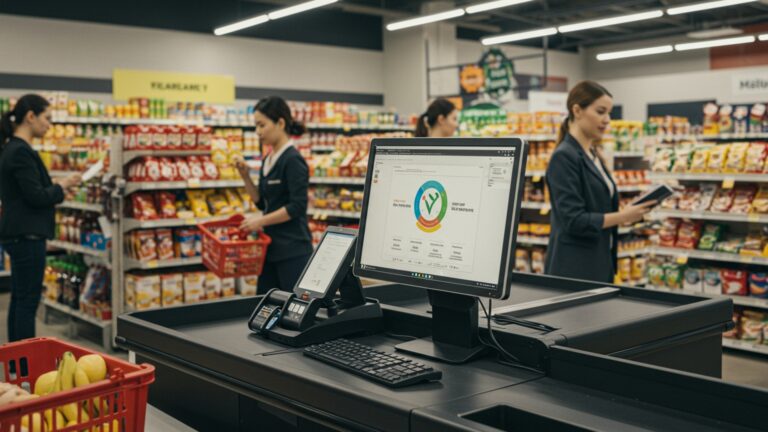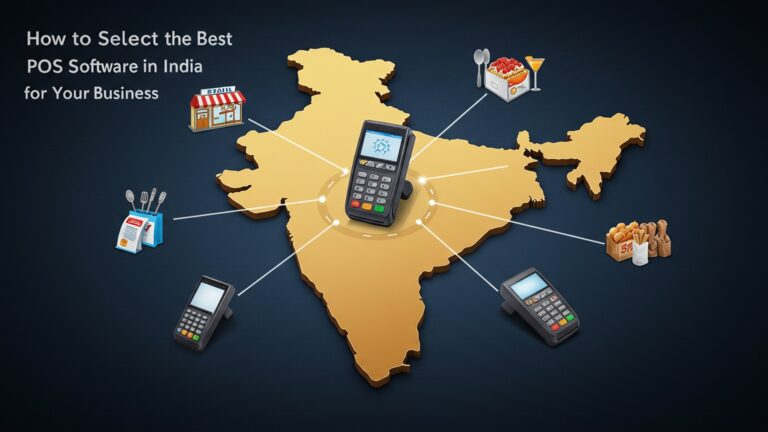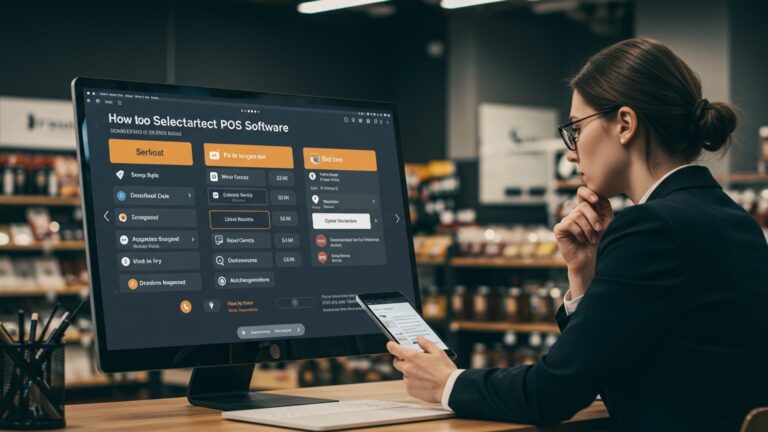How to Choose the Best Mobile POS Software for Your Business
The modern retail and service landscape demands unparalleled agility, pushing traditional static point-of-sale systems into obsolescence. Businesses now leverage mobile POS software for everything from pop-up shops and food trucks to on-the-floor retail assistance and field service transactions. This technological shift, while empowering, presents a complex challenge: navigating a crowded market saturated with diverse platforms like Square, Shopify POS. Toast, each promising robust features. Beyond basic transaction processing, the best solutions integrate seamlessly with inventory management, offer advanced analytics for real-time insights. support emerging payment methods, including NFC and QR code payments, reflecting the rapid evolution of consumer expectations. Choosing the optimal system is no longer just about accepting payments; it’s a strategic decision impacting operational efficiency, customer experience. data-driven growth.
Understanding Mobile POS Software: More Than Just a Cash Register
In today’s fast-paced business environment, the traditional cash register is increasingly being replaced by more dynamic, flexible solutions. At the forefront of this evolution is mobile POS software, a powerful tool that transforms smartphones, tablets, or dedicated mobile devices into full-featured point-of-sale systems. Unlike stationary POS terminals, mobile POS software grants businesses the flexibility to process transactions, manage inventory. access critical data from virtually anywhere with an internet connection.
Essentially, mobile POS software is an application that runs on a portable device, enabling businesses to:
-
- Process credit card payments, debit cards. mobile wallets.
- Track sales and generate reports in real-time.
- Manage product inventory and stock levels.
- Handle customer data and loyalty programs.
- Manage employee shifts and permissions.
The core benefit of this mobility is evident across various sectors. Consider a food truck vendor who needs to process orders quickly during a busy festival, or a retail assistant helping a customer on the shop floor, able to check stock and finalize a purchase without leaving their side. The convenience and efficiency offered by robust mobile POS software are unparalleled, allowing businesses to adapt to customer demands and operational challenges with greater agility.
Key Features to Look for in Mobile POS Software
Selecting the right mobile POS software requires a deep dive into its feature set, ensuring it aligns perfectly with your operational needs. Here are the essential capabilities to prioritize:
-
-
- Payment Processing Versatility
-
Your chosen software must support various payment methods, including EMV chip cards, NFC contactless payments (like Apple Pay and Google Pay). traditional magstripe cards. Integration with leading payment processors is crucial for competitive rates and reliability.
-
-
- Robust Inventory Management
-
This feature is paramount. Look for capabilities such as real-time stock tracking, low-stock alerts, barcode scanning, product variations (size, color). inventory adjustments. For multi-location businesses, centralized inventory management is a game-changer.
-
-
- Customer Relationship Management (CRM)
-
Building customer loyalty is key. The software should allow you to capture customer data (purchase history, contact info), manage loyalty programs. facilitate targeted marketing efforts.
-
-
- Comprehensive Reporting and Analytics
-
Beyond basic sales figures, effective mobile POS software offers detailed reports on sales trends, popular products, employee performance. peak hours. These insights are invaluable for making informed business decisions.
-
-
- Employee Management
-
Features like clock-in/clock-out, permission settings, sales performance tracking. tip management streamline staff operations and accountability.
-
-
- Offline Mode Functionality
-
Internet connectivity isn’t always guaranteed. An offline mode ensures you can continue processing sales even without Wi-Fi, syncing data once connectivity is restored. This prevents lost sales and customer frustration.
-
-
- Seamless Integrations
-
Your POS system rarely operates in isolation. Look for compatibility with essential third-party tools such as accounting software (e. g. , QuickBooks, Xero), e-commerce platforms (e. g. , Shopify, WooCommerce). payroll services.
-
-
- Hardware Compatibility
-
Ensure the software works with your preferred hardware, whether it’s an iPad, Android tablet, or dedicated mobile terminal, along with compatible card readers, receipt printers. cash drawers.
Assessing Your Business Needs: A Strategic Approach
Before diving into specific solutions, a critical self-assessment of your business’s unique requirements is essential. This foundational step ensures that the mobile POS software you select is a perfect fit, not just a generic solution.
-
- Business Type
-
- Retail
-
- Business Type
Do you need strong inventory tracking, customer loyalty programs. multi-channel sales support?
-
-
-
- Restaurant/Cafe
-
-
Features like table management, kitchen display systems (KDS), order modifications. tip management are crucial.
-
-
- Service-Based (e. g. , salons, contractors)
-
Appointment scheduling, client management. invoicing capabilities become priorities.
-
-
- Transaction Volume and Frequency
-
High-volume businesses need exceptionally fast and reliable processing, whereas smaller operations might prioritize ease of use and affordability.
-
-
- Number of Locations and Employees
-
If you operate multiple locations, centralized management, multi-user access. robust employee permissions are vital. For a single-person operation, a simpler system might suffice.
-
-
- Budget Considerations
-
Mobile POS software typically involves upfront hardware costs and recurring software subscriptions. Evaluate both to interpret the total cost of ownership. Some providers offer tiered pricing based on features or transaction volume.
-
-
- Scalability
-
Will your business grow? Choose a system that can evolve with you, adding features, users, or locations without requiring a complete overhaul.
For instance, a small artisan bakery, like “The Daily Crumb,” initially used a basic card reader for transactions. As they expanded to farmers’ markets and pop-up events, their need for real-time inventory updates on their popular sourdough and pastries became critical. They opted for a mobile POS software solution that integrated a robust inventory system with a portable card reader, allowing them to track sales and stock across multiple locations efficiently. This strategic choice prevented stockouts and improved customer satisfaction.
Security and Compliance: Non-Negotiables for Your Mobile POS Software
In the digital age, the security of customer data and financial transactions is paramount. When choosing mobile POS software, robust security features and adherence to industry compliance standards are non-negotiable. Compromised data can lead to severe financial penalties, reputational damage. loss of customer trust.
-
-
- PCI DSS Compliance
-
The Payment Card Industry Data Security Standard (PCI DSS) is a set of security standards designed to ensure that all companies that process, store, or transmit credit card insights maintain a secure environment. Your mobile POS software and its associated payment processor must be PCI DSS compliant. This protects your business and your customers from credit card fraud.
-
-
- Data Encryption
-
All sensitive data, including customer insights, payment details. transaction records, should be encrypted both in transit (when data is sent over the internet) and at rest (when data is stored on servers). Look for end-to-end encryption protocols.
-
-
- Fraud Prevention Tools
-
Advanced mobile POS software often includes built-in fraud detection mechanisms, such as address verification services (AVS), card verification value (CVV) checks. suspicious activity monitoring.
-
-
- User Access Controls
-
Granular permission settings allow you to define what each employee can access and modify within the system. This minimizes internal risks and ensures that sensitive data is only accessible to authorized personnel. For example, a cashier might only have access to process sales, while a manager can view reports and adjust inventory.
-
- Regular Security Updates
The software provider should have a consistent schedule for security updates and patches to address emerging threats and vulnerabilities.
A reputable provider will be transparent about their security measures and compliance certifications. Always inquire about their data handling policies and how they protect your business from potential breaches. The integrity of your business relies heavily on the security foundations of your chosen mobile POS software.
Comparing Popular Mobile POS Software Solutions
The market for mobile POS software is rich with options, each catering to different business sizes and types. Understanding their core differentiators can help narrow down your choices. Below is a comparative overview of some widely recognized solutions:
| Feature | Square POS | Shopify POS | Toast POS | Lightspeed Retail POS | Clover |
|---|---|---|---|---|---|
| Target Business | Small to medium businesses (retail, service, food & beverage) | Retailers (especially those with e-commerce stores) | Restaurants, cafes, food & beverage | Mid to large-sized retail, golf, restaurant | Small to medium businesses (retail, service, food & beverage) |
| Key Strengths | Ease of use, affordable entry, robust ecosystem (payroll, appointments) | Seamless e-commerce integration, strong inventory for retail | Industry-specific features for restaurants (KDS, table management) | Advanced inventory, multi-location management, detailed reporting | Flexible hardware options, extensive app market |
| Payment Processing | In-house (Square Payments) | Shopify Payments (preferred) or third-party gateways | In-house (Toast Payments) | Lightspeed Payments (preferred) or third-party gateways | In-house (Clover Payments) or integrated with various processors |
| Hardware Options | Square Reader, Square Stand, Square Terminal, Square Register | iPad/iPhone, Shopify Card Reader, retail hardware bundles | Proprietary hardware (terminals, handhelds, KDS) | iPad/desktop, integrated hardware bundles | Proprietary Clover devices (Mini, Flex, Station) |
| Monthly Fees (Approx.) | Free basic plan; paid plans from $29/month | Starts from $29/month (Shopify Basic) + POS add-on | Varies; starts from $0/month for basic hardware (transaction fees apply) | Starts from $89/month | Varies by plan, often bundled with processing |
| Offline Mode | Yes (limited functionality, syncs when online) | Yes (limited functionality, syncs when online) | Yes (local processing, syncs when online) | Yes (limited functionality, syncs when online) | Yes (limited functionality, syncs when online) |
This table provides a snapshot. It’s crucial to explore each provider’s specific offerings and pricing tiers, as features can vary significantly between plans. For example, while Square offers a compelling free basic plan, its transaction fees might be higher for larger volumes compared to a subscription-based model with lower per-transaction costs.
Implementation and Support: What to Expect Post-Purchase
Choosing the best mobile POS software is just the first step. Successful integration into your daily operations hinges on a smooth implementation process and reliable ongoing support. These factors significantly impact your return on investment and overall user experience.
-
-
- Onboarding Process
-
A good provider will offer a structured onboarding process. This might include guided setup wizards, video tutorials, or even dedicated implementation specialists for larger businesses. Look for clear instructions on how to set up your products, payment methods. employee profiles.
-
-
- Customer Support Availability
-
What kind of support does the provider offer? Is it 24/7? Are there multiple channels like phone, email, live chat, or a comprehensive knowledge base? For businesses operating outside standard hours, 24/7 support is invaluable. A quick response time to critical issues can prevent downtime and lost sales.
-
-
- Training Resources
-
Beyond initial setup, ongoing training resources are vital. Does the provider offer webinars, detailed guides, or a community forum where users can share tips and troubleshoot? Empowering your staff with thorough training ensures they can fully leverage the software’s capabilities.
-
-
- Updates and Maintenance
-
Software is not a static product. Reputable mobile POS software providers regularly release updates, adding new features, improving existing ones. patching security vulnerabilities. interpret their update schedule and how these updates are deployed (e. g. , automatic, manual).
-
- Hardware Provisioning
If you’re purchasing hardware through the POS provider, inquire about shipping times, installation guides. any warranty or repair services.
For instance, a boutique clothing store, “Elegance Threads,” transitioned to a new mobile POS software. Their chosen provider offered a personalized onboarding session, walking them through inventory upload and staff training. When they encountered a minor issue with a new card reader, their 24/7 chat support quickly resolved it, minimizing disruption to their Saturday morning sales. This level of support significantly eased their transition and built confidence in the new system.
Actionable Steps: Making Your Final Decision
With a clearer understanding of what mobile POS software entails and what to look for, it’s time to put that knowledge into action and make a confident decision. Here are concrete steps to guide your final selection:
-
-
- Take Advantage of Free Trials
-
Many leading mobile POS software providers offer free trials or demo accounts. This is your most valuable tool for hands-on experience. Set up a few products, run dummy transactions, test inventory adjustments. explore the reporting features. Get your team involved to gather their feedback.
-
-
- Read Independent Reviews
-
Consult reputable review sites (e. g. , G2, Capterra, Software Advice) to see what other businesses, particularly those similar to yours, are saying about their experiences. Pay attention to comments regarding customer support, ease of use. any recurring issues.
-
-
- Request Personalized Demos
-
Once you’ve narrowed down your choices, schedule a personalized demo with the sales team. Prepare a list of specific questions related to your unique business needs. Don’t be afraid to ask for a demonstration of niche features that are critical to your operations.
-
-
- Talk to Other Business Owners
-
Leverage your network. Speak with other entrepreneurs or managers who use mobile POS software. Personal recommendations and insights into real-world applications can be incredibly insightful and uncover aspects not highlighted in marketing materials.
-
-
- Evaluate the Total Cost of Ownership (TCO)
-
Beyond the monthly subscription, factor in hardware costs, transaction fees, potential add-on features. any setup or training fees. A seemingly cheaper monthly plan might have higher transaction fees that add up significantly over time.
-
-
- Review the Contract and Terms
-
Before committing, thoroughly read the service agreement. comprehend cancellation policies, data ownership. any long-term commitments. Transparency here is key.
By systematically following these steps, you’ll gather comprehensive data and practical experience, enabling you to select the mobile POS software that not only meets your current needs but also supports your business’s future growth and success.
Conclusion
Choosing the ideal mobile POS isn’t about finding the ‘best’ universally. the perfect fit for your unique operations. Think beyond basic transactions; consider how a solution like Android POS for small businesses empowers agility, especially with the rise of pop-up shops and delivery services. I recall assisting a local artisan, initially overwhelmed by options, who found that a mobile POS with integrated inventory management streamlined her bustling weekend markets, eliminating manual stock checks that used to eat into her creative time. My personal tip? Don’t just look at features; envision the workflow. Will it simplify staff training, for instance, or seamlessly integrate the latest UPI payments, a crucial trend in India? Test the interface, explore its offline capabilities. ensure it supports future growth. This isn’t just a software purchase; it’s an investment in your business’s future mobility and efficiency. Embrace this powerful tool. watch your operations transform from static to dynamic, ready to meet customers wherever they are.
More Articles
A Complete Guide How to Select the Best POS Billing Software for Business
How to Set Up Android POS Software for Your Small Business Easily
Learn How to Streamline Your Business With Billing and POS Software
A Practical Guide How to Choose POS Software for Your Grocery Store
Learn 6 Key Advantages of Android POS for Indian Restaurants
FAQs
What exactly is mobile POS and why should my business care?
Mobile POS (Point of Sale) is a checkout system that runs on portable devices like smartphones or tablets. Instead of being tied to a fixed counter, your staff can process sales, take payments. manage inventory from anywhere within your business, or even on the go. It’s super handy for pop-up shops, food trucks, field services, or just making your in-store experience more flexible and efficient. It boosts customer service, speeds up transactions. gives you more freedom.
What are the absolute must-have features I should look for?
Beyond basic sales processing, definitely prioritize inventory management, customer relationship management (CRM) tools. robust reporting and analytics. You’ll also want secure payment processing, employee management. multi-location support if you have more than one outlet. Integration capabilities with other business tools like accounting software are also huge.
How can I tell if a mobile POS will play nice with my current business software?
This is super vital! Look for software that explicitly mentions integrations with popular accounting platforms (like QuickBooks or Xero), e-commerce platforms (Shopify, WooCommerce), or your existing CRM. Many providers offer an API (Application Programming Interface) which allows for custom integrations. Don’t be shy about asking potential vendors directly about their integration partners or capabilities during your research.
Is my customer and sales data actually safe with mobile POS?
Absolutely, security should be a top priority. Ensure the software offers strong encryption for all transactions and data storage. Look for PCI DSS compliance for payment processing, multi-factor authentication for user logins. regular data backups. Understanding where your data is stored (cloud-based or local) and the provider’s security protocols is crucial.
What’s the typical cost range for mobile POS software?
Costs vary widely depending on features, the number of users. transaction volume. Many operate on a subscription model, ranging from free basic versions (often with transaction fees) to $30-$100+ per month per terminal for more advanced features. Don’t forget to factor in hardware costs (card readers, tablets) and potential transaction fees from payment processors. Always get a clear breakdown of all potential costs.
My business is pretty niche. Can mobile POS handle specific industry needs?
Yes, many mobile POS solutions are designed with specific industries in mind or offer features that can be customized. For instance, a restaurant might need table management and kitchen display system integration, while a retail store needs robust inventory tracking with variants. Look for providers that highlight solutions for your industry, or at least offer a high degree of flexibility and customization.
What kind of customer support should I expect if I run into problems?
Good support is non-negotiable! Look for vendors offering multiple channels like phone, email. live chat. 24/7 support is ideal, especially if your business operates outside standard hours. Check reviews for feedback on their support responsiveness and helpfulness. A strong knowledge base or self-help resources can also be a big plus for quick answers.







